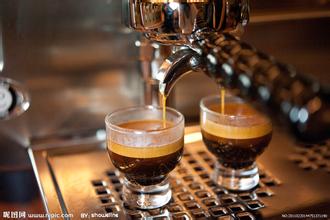Introduction to the planting technology of coffee the planting conditions and distribution of coffee
Planting conditions and distribution of coffee
What is coffee?
Coffee (Coffee) is derived from the Latin word Coffea (biological word name) and belongs to a member of the Rubiaceae family. These plants are all woody plants, most of which are distributed in the tropics, with more than 500 classifications and about 6000 varieties. Most of the Coffea plants are tropical evergreen shrubs 5-6 meters high, and there are also big trees that can grow to more than 10 meters high. This kind of plant is what people usually call coffee trees. The clusters of red fruits (Coffee Cherry berries / cherries) on the coffee tree are called "coffee fruits" and are shaped like cherries. The core (seed) of coffee fruit is the common coffee bean (raw bean).
2. the growth and planting of caffeine
Climatic factors are a prerequisite for the growth of coffee. Coffee trees are only suitable for growing in tropical and subtropical areas between 25 degrees north and south latitudes, which are often referred to as "coffee growing belts" or "coffee producing areas". However, not all the land located in this area, can cultivate excellent coffee trees. The area most suitable for coffee planting and growth must have suitable temperature (annual average temperature: 15-25 degrees), moderate rainfall (1500-2000 mm annual rainfall, and can match the flowering cycle of coffee trees), fertile soil (soil containing volcanic ash) and good drainage.
Coffee planting conditions | Coffee planting conditions and requirements. The important conditions of coffee cultivation are called "coffee belt".
Sichuan barista club.
Coffee trees are extremely picky about the environment in which they grow. Coffee trees like cool and are most suitable for growing in the soil covered with volcanic ash. Proper Rain Water is required as well as good drainage. Drought and waterlogging have fatal effects on the growth of coffee trees. Coffee trees have certain requirements for sunshine and irrigation water quality. If you want to get the best coffee beans, you must strictly control the composition of the soil, rainfall and irrigation, sunshine time and ambient temperature when planting coffee trees.
The higher the altitude of the coffee growing area (usually more than 1000 meters above sea level), the higher the value of the coffee beans produced. The higher the altitude, the lower the temperature, and the slower the coffee grows. As the ripening period of the fruit is prolonged, more elements will accumulate during its growth. The coffee beans produced in this environment are small and full, and the coffee is rich in flavor and unique in taste. However, the fruits of coffee trees grown in this environment are scarce. Each coffee tree usually produces less than 2 kilograms of coffee fruit a year. The processed and roasted coffee beans are about 450 grams, which can be made into about 40 cups of coffee drinks.
With the increasing demand for coffee, artificial planting of coffee trees has become an important economic activity in coffee producing areas. With the improvement of varieties and planting techniques, the growth of coffee trees has been relatively widely adapted to the environment.

Important Notice :
前街咖啡 FrontStreet Coffee has moved to new addredd:
FrontStreet Coffee Address: 315,Donghua East Road,GuangZhou
Tel:020 38364473
- Prev

Sun-treated coffee beans with charming citrus jasmine flavor introduce sun-treated coffee
Flavor introduction: if the washed Yega Chuefei has charming citrus, jasmine, lemon and other fragrances, the entrance of coffee is in full bloom ~ the sun Yega is more like a fruit bomb that explodes after the entrance, bold, wild, fruit-flavored syrup-like sweetness and mellow thickness in addition to its own citrus lemon aroma, blueberry and strawberry wine is amazing! The flavor is really better than water.
- Next

Introduction of coffee treatment method introduction of coffee tanning method and washing method
Pulped-natural, also known as honey treatment (Miel Process in Spanish), is said to refer to the process of making raw beans that are sun-dried with mucous membranes. The honey treatment process is vulnerable to pollution and mildew, so it needs to be closely watched throughout the process, constantly turning, and speeding up drying, so as to avoid bad fermentation flavor. Its advantage is that it can best preserve the original sweetness of the ripe fruit of coffee.
Related
- What is the meaning of lactic acid fermentation with coffee bean treatment?
- How to judge the state of foam by sound?
- How does the latte pull out the unicorn pattern? Come to get for a little trick to improve the flower pull!
- Will flower pulling affect the taste of the latte?
- Do you know the history of coffee?
- The difference between honey treatment and sun washing what is raisin honey treatment?
- What kind of milk can a novice use to make coffee foam to keep the foam longer? The correct method and skills of milking tutorial sharing
- Why do washed coffee beans taste sour? Flavor characteristics of washed Coffee
- Introduction to the skill of how to practice the size and height of water injection around the circle of hand-brewed coffee
- How do beginners practice coffee flower drawing from scratch?

